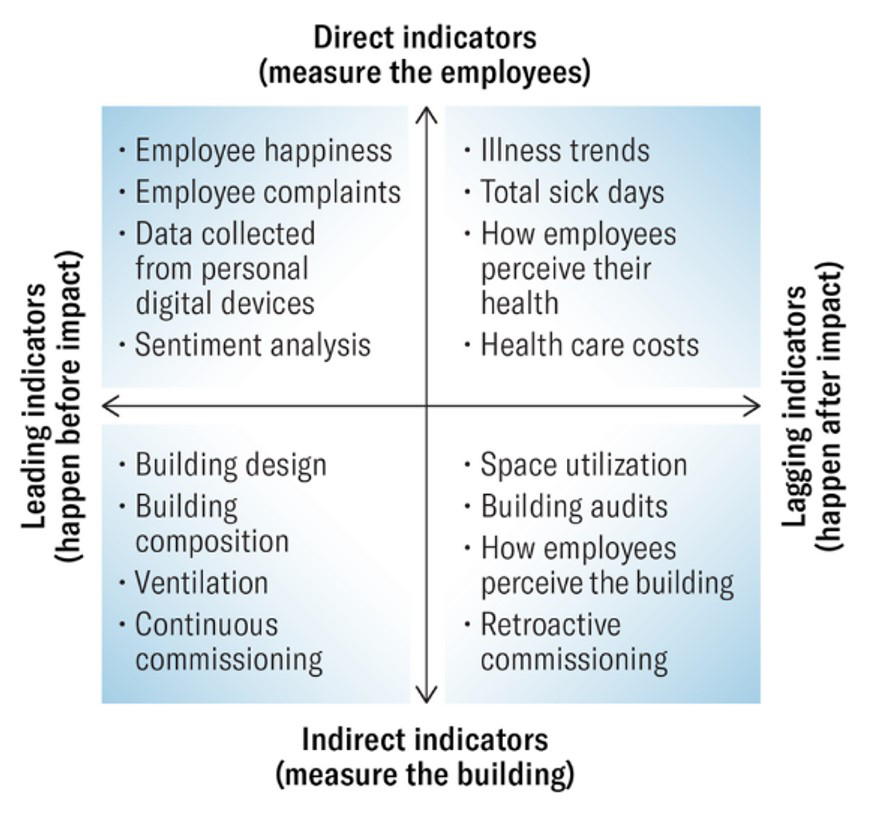Allen and Macomber recommend that businesses begin tracking Health Performance Indicators (HPIs) as a means of measuring their building’s performance in terms of indoor environmental quality.
HPIs can be divided into four quadrants according to the timing of indicators and what they measure.
Their four quadrants are divided into leading and lagging indicators, as well as direct and indirect indicators. Direct indicators measure people (the top half of the grid), while indirect indicators measure the building (the lower half of the grid).
Carbon dioxide sensors can be used to gauge ventilation rates; particle sensors can make you aware if a nearby pollution source is impacting your building.
The investment in a healthy building is relatively affordable, the authors state, and the ROI surprises many people. Scientific studies estimate that doubling the ventilation rate of a building cost less than $40 per person per year in all climate zones, yet the benefits of higher ventilation are between $6,500 and $7,500 in improved performance per person per year.



